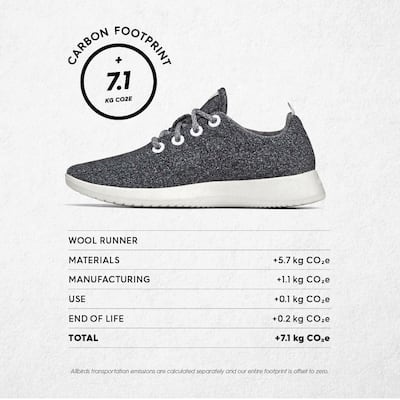
The Business of Fashion
Agenda-setting intelligence, analysis and advice for the global fashion community.

Agenda-setting intelligence, analysis and advice for the global fashion community.

LONDON, United Kingdom — For the last year, Allbirds has been working towards full transparency on the carbon footprint of every major product the company makes. It's an initiative that a month or so ago would have been a buzzy addition to the growing conversation around fashion's climate impact.
Then Covid-19 hit.
Consumers stuck at home, fearful for their health, have pulled back spending on discretionary items. Retailers, unable to operate shuttered stores, have watched revenues shrivel. The rules of marketing have changed as consumer priorities have shifted dramatically.
But for Allbirds, the decision to provide transparency on its emissions is not about a singular marketing moment; it’s a long-term bet on the value of the company’s commitment to operating in a more environmentally responsible manner.
ADVERTISEMENT
It may prove to be savvy positioning. According to The Business of Fashion and McKinsey & Company's coronavirus update to the State of Fashion report, the current "quarantine of consumption" could accelerate consumer demand for purpose-driven brands. On the other hand, many companies under financial stress may pull back from environmental initiatives, putting those that can demonstrate progress on the front foot.
“I really believe the consumer... [is] thinking about health and wellness in a different way,” said Allbirds co-founder Joey Zwillinger. Front of mind right now is “health as it relates to taking care of themselves, and I think it will turn to how to take care of the world.”
Like most brands, Allbirds has seen a drop in sales as a result of efforts to contain the Covid-19 pandemic. Many of its 18 stores are closed and sales on its e-commerce site are down. But the company is better positioned than many in the industry. Unlike competitors, it has not resorted to steep discounting and it has committed to ensuring all its employees continue to receive full salaries until July 31.

Source: Courtesy
“Our product resonates with people right now,” Zwillinger said. “If you’re isolated and you have to stay home, at least you can walk around, and you want to be comfortable and feel great about your own personal health.”
But the co-founder is looking beyond the current crisis, maintaining the company’s strategy and planning for what comes next.
Before the crisis hit, companies were already facing mounting scrutiny for how they marketed "sustainability" initiatives, with many smaller brands committed to more environmentally and socially responsible practises starting to avoid the term because of overuse and greenwashing. For Allbirds, its move to provide transparency on the carbon footprint of its products is intended to add credibility to a marketing strategy that has already proved its power in sustaining the company's growth.
Last year, the company went carbon neutral, paying about $10 a ton to offset its emissions with a commitment to keep working to reduce its footprint. This is the next step.
ADVERTISEMENT
“Consumers obviously care about sustainability. And a lot of companies use the word sustainability and don’t do anything and are just hoping to cash in on the marketing value,” said Zwillinger. “We decided that to continue to push this conversation required us to be highly transparent...We need something so simple that everyone could look at it, just like the calories on a food label.”
The company partnered with environmental consultancy Clean Agency to calculate its carbon footprint, pouring substantial resources into measuring the impact of each component in its footwear.
The company’s wool runner has a footprint of 7.1 kilograms of carbon dioxide equivalent. The calculation includes the environmental impact of production, use and end of life, but excludes transport emissions, which are highly variable. A standard pair of mens’ running shoes made with synthetic materials comes in at 12.5 kilograms of CO2e, according to Allbirds' calculations.
The company is committed to continuing to bring down its products' footprints, despite the current distractions.
“The driving factor on deciding to launch it now is essentially that this is a problem that really can’t wait,” said Zwillinger.
Related Articles:
How to Make Sustainable Fashion People Will Actually Buy
Lessons From Footwear's Quiet Revolution
In Crisis, Don't Ditch Sustainability
The fashion industry continues to advance voluntary and unlikely solutions to its plastic problem. Only higher prices will flip the script, writes Kenneth P. Pucker.
The outerwear company is set to start selling wetsuits made in part by harvesting materials from old ones.
Companies like Hermès, Kering and LVMH say they have spent millions to ensure they are sourcing crocodile and snakeskin leathers responsibly. But critics say incidents like the recent smuggling conviction of designer Nancy Gonzalez show loopholes persist despite tightening controls.
Europe’s Parliament has signed off rules that will make brands more accountable for what happens in their supply chains, ban products made with forced labour and set new environmental standards for the design and disposal of products.